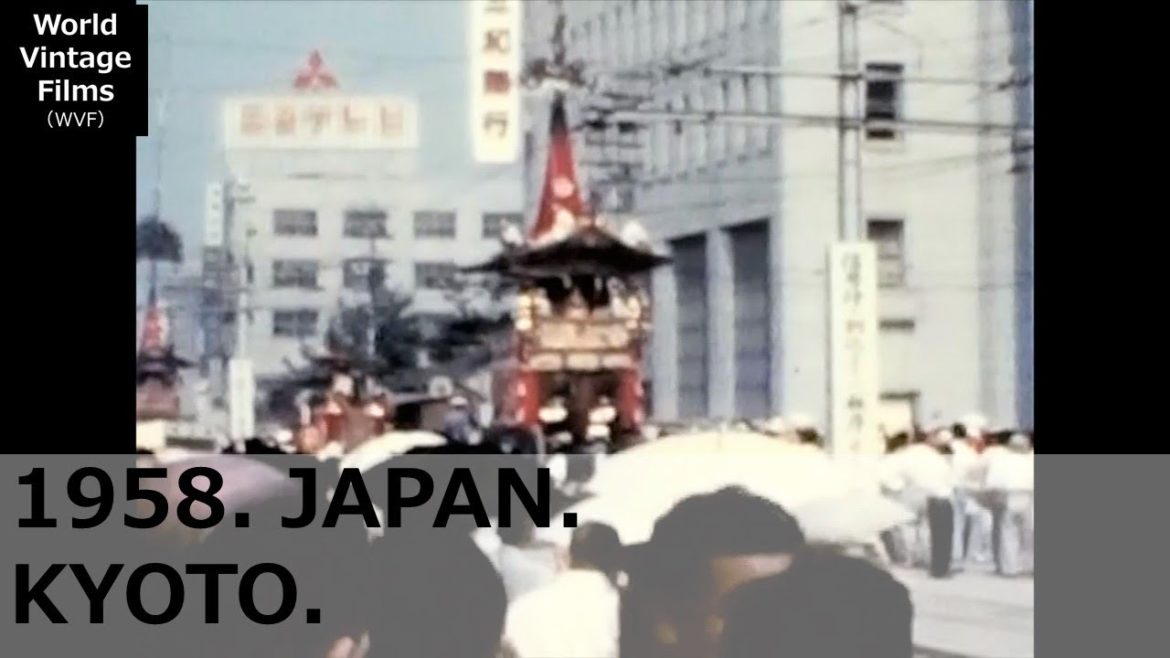The Kyoto Gion Festival is a festival of Yasaka Shrine (Gion Shrine) in Higashiyama Ward, Kyoto City, and was called Gion Gion Gion Gion (Gion Gion) until the Meiji era. It is a summer tradition in Kyoto that has continued since the Jōgan era (9th century). Festival events are roughly divided into those sponsored by Yasaka Shrine and those sponsored by Yamahocho. In general, the events organized by Yamahocho are often recognized as “Gion Matsuri”, and only the Yamahoko event is designated as an important intangible folk cultural property. Among the various events organized by Yamahoko Town, the Yamahoko event, which is the highlight, can be divided into two festivals, the pre-festival (pre-festival) and the post-festival (post-festival) [1], depending on the time when the floats are installed. The Yamaho event is “Yoiyama” (Yoyama, meaning the eve of the festival. Pre-festival: July 14-16, post-festival: July 21-23), “Yamaho patrol” (pre-festival: July 17) After festival: July 24th) is famous. The Shinto rituals sponsored by Yasaka Shrine are famous for “Mikoshi Watari Go” (Kamiyuki: July 17th, Returning Yuki: July 24th) and “Mikoshi Washing” (July 10th, July 28th). It can be said that the flower umbrella tour (July 24) sponsored by “Yasaka Shrine” is also an event on the Yasaka Shrine side. Yoyoyama, Yoyoyama, and Yoyoyama are also known as folding screen festivals because they also showcase treasures such as folding screens that have been handed down at old houses and long-established stores. Also, in the Yamahoko cruise, the Yamahoko, an important tangible folk cultural property decorated with various arts and crafts, travels on public roads, so it can be compared to a “moving museum”. Gion Matsuri is one of the three major festivals. The Three Great Festivals of Kyoto (others are the Aoi Festival of Kamigamo Shrine and Shimogamo Shrine, the era festival of Heian Jingu), the Three Great Festivals of Japan (the others are the Tenjin Festival in Osaka, the Sanno Festival in Tokyo, and the Kanda Festival), and the Three Great Hikiyama Festivals in Japan (others). It is one of the Takayama Festival in Takayama City, Gifu Prefecture, the Chichibu Night Festival in Chichibu City, Saitama Prefecture), and the Three Great Festivals of Kyoto (the others are the Takayama Festival and Chichibu Night Festival mentioned above), and is a representative festival of Japan.
In Japan, when we say simply “pre-war”, we usually refer to the period before the outbreak of World War II, starting with the attack on Pearl Harbor. The Japanese economy grew by leaps and bounds over a period of about 19 years, from 1954 to 1973, when the domestic postal code system and Euroclear were established in 1968, followed by rapid progress in bringing the bill clearing system online. In 1956, the White Paper on the Economy was published. During the period of rapid economic growth in the 1960s and 1970s, the economy benefited from special demand from the 1964 Tokyo Olympics and the 1970 Osaka World’s Fair. In 1968, the country’s gross national product (GNP) surpassed that of West Germany to become the second largest in the world. Bullet trains and expressways were built. Just before the 1970s, when Japan became a creditor nation, foreigners began to invest more in Japanese stocks. The Nixon Shock of 1971 led to a substantial revaluation of the yen, which corrected the excessive surplus in the balance of payments and contributed to economic stability. In October 1973, the Fourth Middle East War triggered a rise in the price of crude oil, and Japan fell into an oil shock (the First Oil Shock). Thereafter, the economy moved into a period of stable growth (from December 1973 to February 1991, when the bubble economy burst).
About “World Vintage Films”
Youtube shows videos taken from the 1910s to the 1980s.
The footage is original and was taken by my family and my friends during the trip.
That’s why many of the videos are taken by Japanese people.
Editing work is first converted from analog to digital. Then remove the unwanted parts and add the original music and subtitles. I don’t want to hide the video, so there are few subtitles.
Monochrome images may be colorized.
Overseas travel, domestic travel, pre-war, war-time, post-war travel around the world.
I have more than 10,000 films that I haven’t released yet. We will continue to edit and distribute it little by little.
There are many valuable images. Especially rare are old footage of less developed countries. At that time, photography equipment was rare. Prewar Japanese footage is also valuable. Old cars and railroads. There is also a video taken from the sky on an airplane. Towns and markets. And the appearance of people. Famous tourist spots and natural scenery. Fashion sense is also interesting unlike the present. Enjoy the old-style landscape.
(Because it translates in multiple languages, I am not good at writing)
#1950s
#JAPAN
#kyoto
BGM: MusMus

